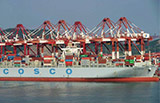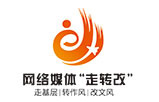Clearing the path for global currency
By Diao Ying in London (China Daily) Updated: 2012-10-31 10:37
Report highlights ways to boost renminbi's international role
A more efficient system should be in place to facilitate the increasingly wide use of the yuan in global transactions, according to a report by SWIFT, the communication platform among international banks.
Global use of the currency has surged. In August the renminbi rose to 14th in the table of payment currencies, up from 35th in October 2010, according to a report by the Society for Worldwide Interbank Financial Telecommunication.
Most other currencies remained flat or moved marginally during that period.
Trade finance is the primary driver behind the rise. Paying in yuan means domestic companies will get lower borrowing costs and reduce foreign exchange risks.
In addition, the report said, some Chinese buyers and suppliers prefer the currency.
The People's Bank of China estimates that overseas importers can save 2 to 3 percent on their invoice bills by paying in yuan.
"Currency appreciation or depreciation might be irrelevant", in the rise in the yuan's international use, the report said.
Yuan-denominated trade accounted for about 10 percent of China's total foreign trade in July, the report said.
In the meantime, the currency's use has moved into a new stage, said Patrick de Courcy, head of markets, Asia-Pacific, for the organization.
He said the path of the yuan's further internationalization will involve three phases: trade finance, investment and as a reserve currency.
However, the increasing use of the yuan poses challenges. Banks said that offshore yuan clearing is appropriate, the report said, but in the long term, improvement is needed.
"The existing arrangement for offshore renminbi clearing has served the industry well, to date. In the medium to long term, however, it is important that we have an enhanced platform," De Courcy said.
The primary goal of a future yuan clearing system should support the need for seamless routing of the yuan within China and around the world. A typical payment in US dollars can be settled within seconds, while settling in yuan takes much longer.
Offshore yuan clearing can take two routes. The first sees the transaction go through either the designated clearing bank, Bank of China in Hong Kong. The second route goes directly to a yuan agent bank on the mainland.
Bank of China (Hong Kong) processes about 80 percent of offshore renminbi transactions.
It has extended its operating hours since June to facilitate businesses in other time zones. But the foreign exchange market in Hong Kong closes at 5 pm, preventing European markets from trading with it overnight.
The second route takes about 20 percent of the yuan clearing volume, in which cash can only be withdrawn from the People's Bank of China at 9 am the next day.
The greatest obstacles for European companies hoping to use the yuan are the slow payment process and difficulties in obtaining approval for payments from authorities, according to a recent survey by the Deutsche Bank.
In a separate development, a research report by the Peterson Institute for International Economics said cross-border trade in yuan will triple to $1.03 trillion in three years.
The report agreed that the renminbi has been moving closer to becoming a global reserve currency. It noted that seven out of 10 major economies surrounding the Chinese mainland were tracking the yuan more closely than they do the US dollar, including South Korea, Indonesia, Malaysia, Singapore and Thailand.
Only three economies, Hong Kong, Vietnam, and Mongolia, still have their currencies following the US dollar more closely than the yuan.
The forming of a yuan bloc is inevitable as a result of China's rise as a main trading partner in Asia, the report said.
China's share in East Asian countries' manufacturing trade has risen from 2 percent in 1991 to about 22 percent this year, according to the report.
diaoying@chinadaily.com.cn
- WWE names new regional head, eyes further expansion in China
- 'Made In China' goods drive mobile phone, electronics markets in Bangladesh
- Baidu reports Q1 revenue jump
- New Lamborghini CEO unveils Huracan family
- China's economic reform expected to slow energy demand
- Baidu helps domestic mobile apps expand overseas
- Hukou reform under way in 29 regions across China
- When automobile show meets virtual reality

















